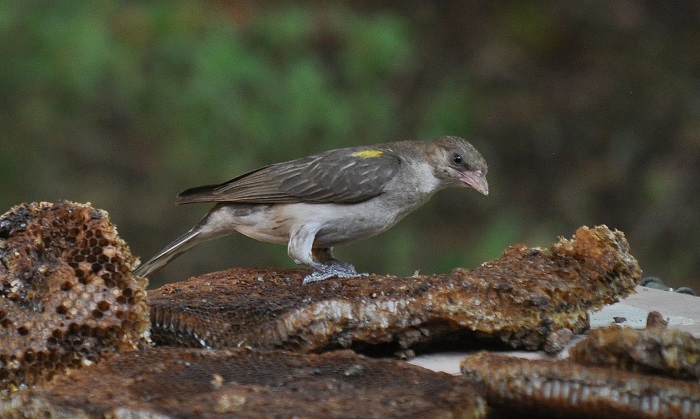Cerophagy is the “official” term for eating beeswax, in the same way as herbivory is the term for eating plants.
The most well-known group of species that eat beeswax is the honeyguides, and especially the Greater Honeyguide Indicator indicator. One of the most famous mutualisms in the entire realm of biodiversity is that between humans and Greater Honeyguides. The honeyguide guides the human to the bees’ nest; the human breaks the nest open, removes honey, and leaves beeswax for the honeyguide. The honeyguide provides a service (guiding the human to the honey), the human provides a service (breaking open the nest, using axes and smoke), and the honeyguide gets a reward (beeswax) and so does the human (honey)!

A camera trap study in Mozambique revealed that more species ate beeswax than previously realized, and that, although cerophagy was not common, there were other species that visited the beeswax that had been left behind by the human honey hunters. This included other honeyguide species, and a bunch of mammals: striped bush squirrel Paraxerus flavovittis, African civet Civettictis civetta, honey badger Mellivora capensis, yellow baboon Papio cynocephalus, and Meller’s mongoose Rhynchogale melleri.
